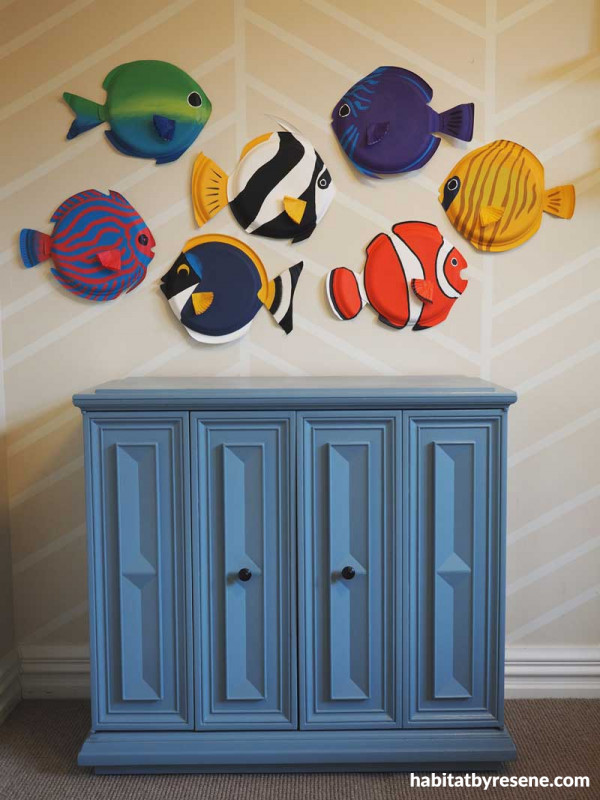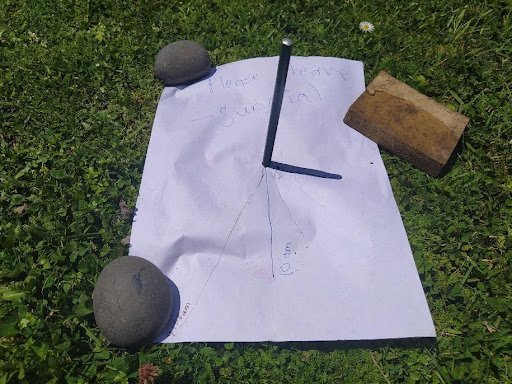Aug 19: Design your own fish!
Make your own school of fish using whatever you have around the house.
Below are some talking points and activities to pass the time, all relating to today’s story.
Talking points
Discuss the ideas presented in the story with your family—at home or over video conferencing. Find ways to involve as many people as possible, especially those who you know are isolated by the lock-down.
- The Kermadec Islands lie between New Zealand and Tonga. If you find these places on a map, can you imagine a line of underwater volcanoes stretching between them for thousands of kilometres? Draw your own map if you want to.
- The tips of some of these volcanoes jut out of the water, making islands, while others are totally underwater and still others are “caldera” or basin-shaped. Could you draw a picture that showed these three types of volcanoes? If you think of New Zealand volcanoes, can you name one that is an island, an underwater or a caldera volcano?
- “Beneath the surface, a whole new context is revealed. The islands are mere mountain-tops, part of a mighty line of volcanoes which mark another meeting place—one of tectonic plates, where the Pacific Plate is subducted beneath the Australian Plate.” Can you use your hands to show how the Pacific Plate is subducted under the Australian Plate? See if you can find out what happens to a plate when it is subducted and gets closer to the earth’s core.
- “These islands in the middle of nowhere have attracted life, from everywhere. And not just fish—there are corals, sea urchins, algae, crabs and all manner of other plants and invertebrates.” Which of the images of residents of the Kermadecs did you find beautiful or intriguing?
- Allison Ballance says the Kermadecs are a “reference library for the near-magical symbiosis of an ecosystem in balance, lest we forget.” What do you think she is trying to suggest when she calls the Kermadecs a reference library? Why might she have used a well-known war-commemoration phrase to end her article?
Activity
Create your own beautiful colourful fish using whatever you can find around the house.
You will need:
- 9 large paper plates
- Scissors
- Hot glue gun
- Craft brushes in a variety of sizes
- Paper cupcake cups
- Some paint
Step 1: Start with some plain white paper plates. These plates are 26cm in diameter. Use scissors to cut out fish shapes from 7 of the paper plates, such as the mouth and fins.

Step 2: Use the 2 left over plates to cut out the tails. Cutting the plates into quarters was a good start for the tail shape. Cut the tail into the final shape you want and attach it to the fish body with a hot glue gun. Paint the fish with whatever you have to hand.

Step 3: Fold paper cupcake cups into quarters and paint these for the fins and use hot glue to attach the fins to the fish

Step 4: You can attach the fish to the wall with blu tack.
Step 5: Send us a picture of your colourful fish!
Language Focus: Birdlife at the Kermadecs
Seabirds wheel and swoop, glide, dive and screech, in greater density over the Kermadecs than anywhere else in New Zealand. They dominate the terrestrial ecosystem as well: the cliffs and shores of craggy outlying islands are honeycombed with burrows and in places snowed with guano. Some burrows are just five centimetres across, others have yawning entrances half a metre wide and extend three metres into the cliffs. On the Herald Islets, seedlings in the forest understorey do silent battle for space with seabird burrows and nests covering every available patch of earth.
- In the first sentence, which five powerful verbs describe the activity of seabirds?
- The islands are “honeycombed” with burrows and “snowed” with guano – what do these metaphors help us imagine?
- What is suggested when we imagine a “yawning” entrance?
- The passage says the seedlings “do silent battle for space.” Why is it such a battle?
(Answers: 1. Wheel, swoop, dive, glide, screech. 2. Lots of small burrows; a white covering of guano. 3. A large wide entrance. 4. They do silent battle because there is hardly any spare earth to grow in due to all the nests and burrows.)

















